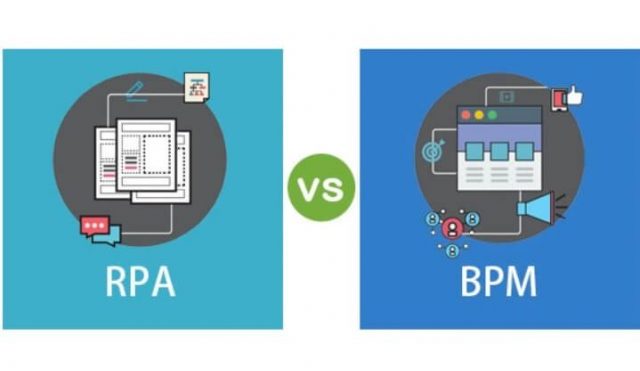Table of Contents
As you know, science and technology is one of the most developed fields today. Every year, many inventions have been born to serve the actual needs of people. In which, there are 2 software super robots, RPA and BPM. Both technologies have a common use to help optimize automated processes and improve worker productivity. Many people are asking: “What is the difference between RPA and BPM?”. WinActor Support will answer this question fully in the article below.
1. What is RPA
RPA’s full name is Robotic Process Automation. This is a software robot developed to solve tasks of fixed logic. Relying on automatic memorization, RPA can perform the work according to the pre-set procedure.
Automated robots have easy operating procedures. Thus, you can install a working program for RPA without any special programming knowledge, which is a big plus point for RPA compared to other technologies. Employees only need to read the instructions and follow them completely without technical training experts in the IT field.
We can divide RPA into 2 different categories: Attended RPA and Unattended RPA:
For Attended, bots will work on a certain server. It helps the office workers to perform some repetition. All operations will be automated on a fixed computer and supervised by humans.
As for Unattended RPA, it can work on a large server. The bots will work automatically without human intervention. In addition, it is self-starting. We just need to set the time and working address, it will automatically activate according to the correct program.
2. What is BPM
The full name of BPM is Business Process Management. It is a business process management software designed to improve business processes. Through the combination of technology and business, BPM will help improve and optimize work processes.
BPM business process management software is of great significance to businesses. Because it helps the company perform better in improving employee productivity, work quality and customer service. From there, BPM will help the company significantly reduce investment costs and increase profits quickly.
A business process management cycle of BPM will include 6 stages:
- Design: This is the first phase that defines the existing and sketching processes on a model. Sketch work includes process flow, related elements, and some notices and notes.
- Modeling: This is the next stage when we are done with the design. The modeling phase will move from the sketch model to BPM software and conduct testing.
- Execution: This is the 3rd stage in the BPM workflow. At this stage, enforcement will execute the process in the formal environment of the organization.
- Monitoring: The next stage is monitoring. The main job of BPM is to track the processing of each business process, gather information and statistics. From there, businesses can recognize defects in their operations based on consistent performance results.
- Optimization: After detecting the difference between the model and reality, BPM will optimize the process and discover new directions for businesses to improve work productivity. This is the period that brings the greatest efficiency and value to your company.
- Redesign: This is the final stage in the BPM workflow. The redesign phase uses the results of the optimization phase to rework and improve business process performance.

3. The difference between RPA and BPM
Both RPA and BPM technologies help businesses improve business processes.
But if we look at each detail separately, we will see a clear difference. Here are the differences between Robotic Process Automation and Business Process Management.
Technology
As for RPA, it will perform monotonous, repetitive tasks to help employees deal with desk jobs. From there, they will have time to focus on more complex and high-value tasks.
With BPM, it is different, it performs two tasks simultaneously: defining and streamlining business processes to eliminate unnecessary operations. From there, the working process will have a shorter cycle, significantly saving costs for businesses.
Primary focus
Robotic process automation will reduce the amount of manual labor. It does the rule-based iterative work and doesn’t need any decisions.
BPM’s Primary Focus enables businesses to re-engineer and modify business processes to improve efficiency. From there, the company will have an effective assistant to help optimize the automatic operation, improving labor productivity significantly.
Deployment effort
Analysts will need less effort with the RPA tool. Because the automatic robot can work continuously based on the preset process. As for BPM, businesses will require more effort than RPA. Because business process management software involves reshaping business processes for your organization.
Business impact
For Business impact, RPA will help the company return goods quickly and immediately. In some cases, automated robots are not capable of solving problems in your business processes.
As for BPM, implementing this technology will help businesses bring long-term profits, reduce labor costs and increase labor productivity. BPM can streamline processes, optimize and eliminate manipulation errors during work.
Read more: What is the difference between RPA and AI?
4. How to choose the right one?
Before you want to apply any technology to your process, you need to understand how that technology works. The same goes for RPA and BPM, if you do not learn the necessary information carefully, you will most likely be misapplied.
You should choose RPA when your business has the following factors:
- Need technologies to help automate processes
- There is a clear process
- Revolutions don’t change often
- Virtually do not require any integration
You should use BPM for mainly performed processes by humans or that require integration with any technology.
Many people often ask the question, “can we combine RPA with BPM?” The answer is yes. When your process system is integrated with both technologies, RPA and BPM will help you build a strong foundation. It can support digital transformation in your business.
Read more: The Benefits of RPA and BPM combined
Conclusion
Hopefully, through the article, you can understand more about the two software technologies RPA and BPM. Remember, you need to learn and choose the right technology for your process. If given the opportunity, you can integrate both these technologies or other technologies to make the workflow more optimized and efficient.

WinActor is an RPA software solution by NTT DATA Corporation to help businesses master technology, create breakthroughs in the digital age 4.0.




